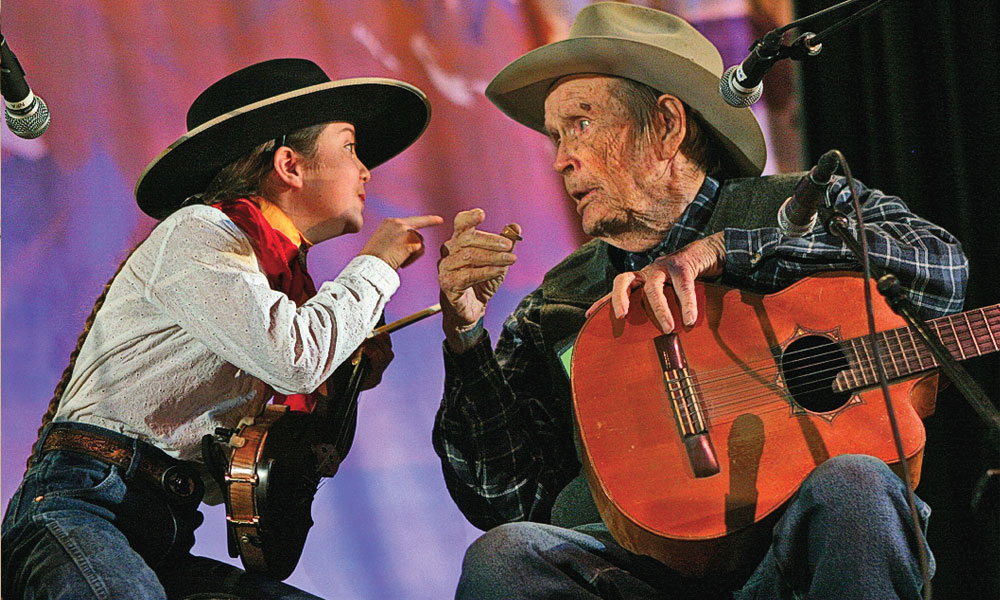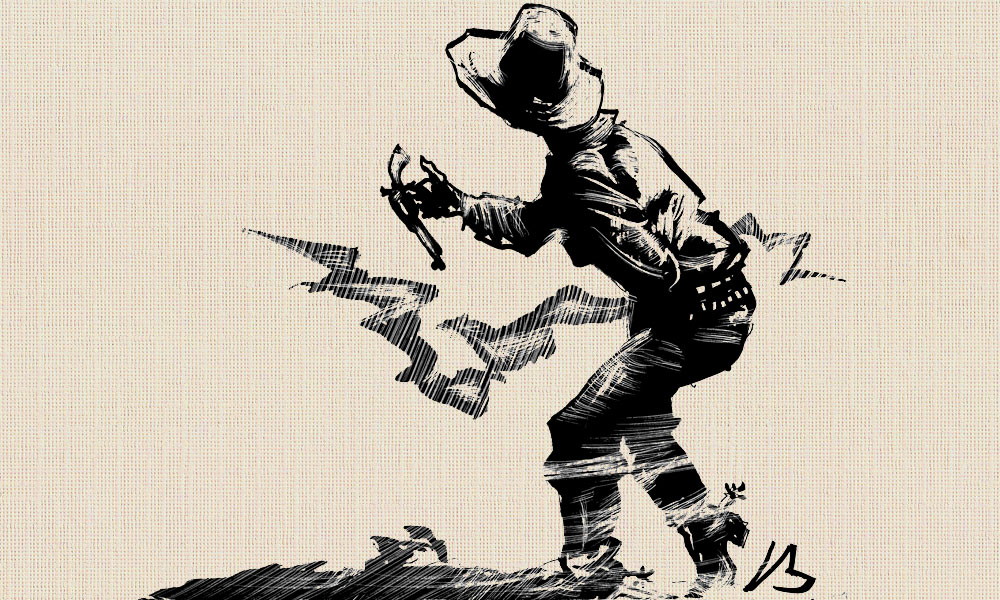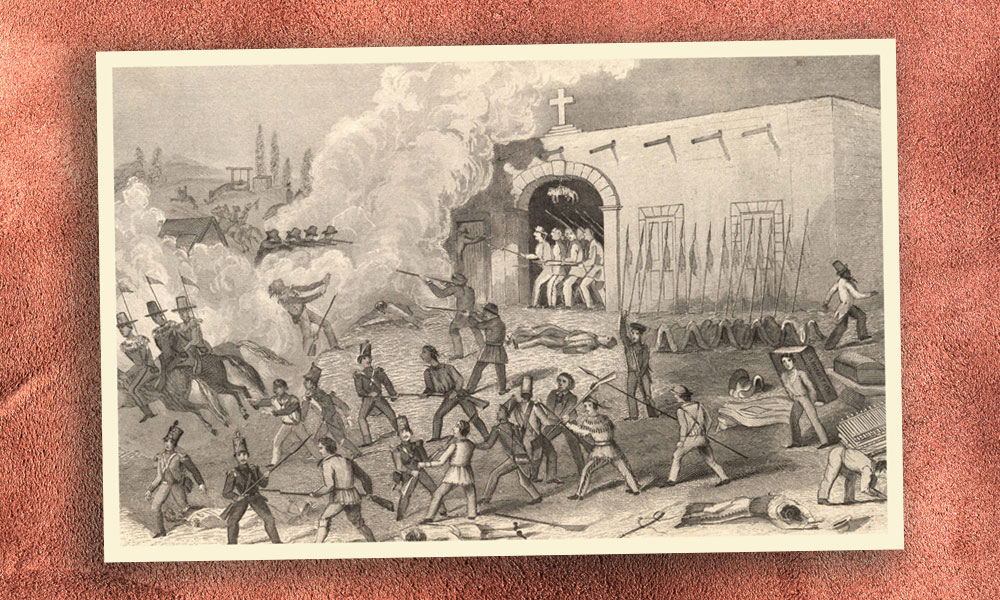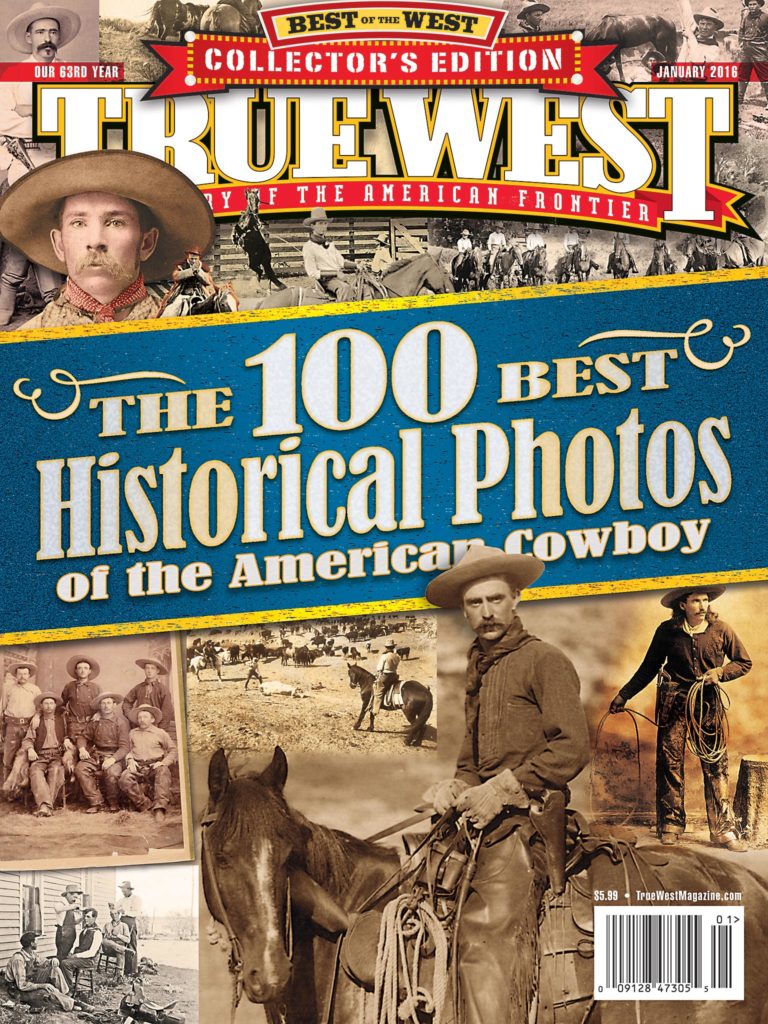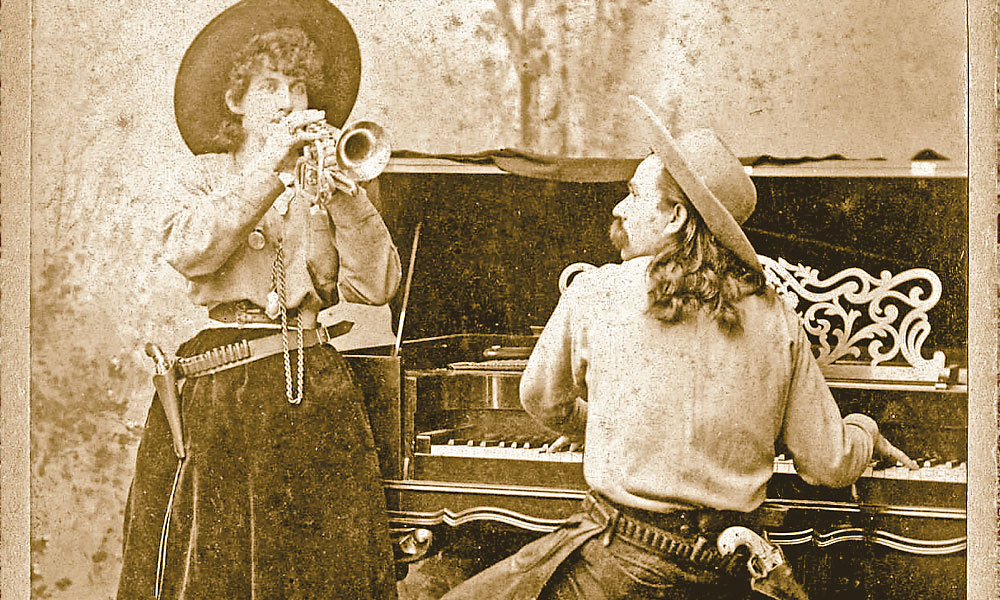
–Courtesy Herb Peck Jr. Collection –
“His wrists are of spring-steel, and his finger [sic] like unto the comb of a musical box. His octave playing is beyond all doubt the most extraordinary we have ever heard. His chromatic scale playing is like the rippling waters, and his staccato like the dropping of crystals.”
Thus, The New York Mirror lauded A.O. Babel, known as the “Cowboy Pianist,” for his debut at New York City’s Steinway Hall on March 10, 1886. For a few glorious years, during the 1880s and 1890s, this “Steer Puncher” dazzled audiences across the United States. His recitals at concert halls, theatres and dime museums, in cities such as Chicago, New Orleans, Cincinnati and New York, featured showstopping feats that included playing his instrument with a cloth hiding the keys. The piano master claimed a repertoire of more than 1,200 songs.
Babel told fantastic tales of his adventures as a cowboy and scout who spoke nine Indian languages and served as an interpreter for the military. He also claimed to have brought desperados to justice. His fall from a horse resulted in terrible injuries, but after a lengthy convalescence, Babel discovered his sudden and miraculous talent for the piano.
About 1885, he emerged as a “musical prodigy” from Texas. “Mr. Babel plays entirely by ear,” the New Orleans Graphic commented, “and is a genuine cowboy never having been out of the State until about a month ago. He says playing came to him naturally.”
Babel, the son of Prussian immigrants Amandus and Amalia Babel, was born about 1856 in Seguin, Texas. In actuality, his father, a professor of music, most likely drilled his son, young Oscar, through the rigors of piano instruction almost from his infancy.
When news of Babel’s tuneful exploits reached Texas, some critics disputed his cowboy talent. One writer to The Dallas Morning News riled in 1886, “I doubt if he ever even roped a calf in his life.… He was his father’s pupil for years—up to his manhood…. The cowboy business…is all the glowing imagination of some Bohemian, a regular tarantula romance.”
But outside the Lone Star State, Babel capitalized on his cowboy persona. By 1887, his performances included a partner, Mattie the “cowgirl cornetist.” Mattie was probably Emma Rumpel of Houston who had married Babel on June 8, 1880, as reported in The Galveston Daily News.
For all the fans who hailed his musical prowess, Babel also had his share of detractors. One reviewer for Kansas’s The Atchison Daily Globe caustically described his “delirious tune” on a “jim jam piano” in 1887: “He had three or four revolvers strapped to his waist, and wore a greasy suit of buckskin shadowed by a huge sombrero…the quality of his music…was so bad that everyone wondered how any people outside of a lunatic asylum could be fooled by such a dizzy fraud.”
His star shone brightly for a few years. Babel and his wife eventually settled in Randolph, New York, where he died on January 19, 1896. The final curtain had fallen on the so-called cowboy pianist.
Writer and musician Laurie E. Jasinski is a research editor for the Texas State Historical Association; she edited The Handbook of Texas Music, Second Edition.


